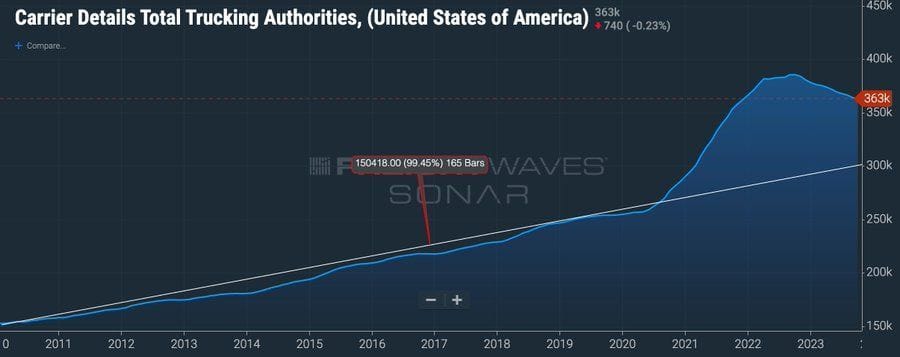- The FreightCaviar Newsletter
- Posts
- Insights on the Impact of Freight Brokerages
Insights on the Impact of Freight Brokerages

Image Source: Statista / C.H. Robinson / Armstrong & Associates
The freight brokerage landscape has undergone a shift in the past two decades. From being an industry underdog to now spearheading the direction of freight cycles, freight brokers have changed their narrative. Drawing insights from FreightWaves Founder and CEO Craig Fuller, let's break down this shift.

Freight brokers handle over 20% of all freight in the U.S. Source: C.H. Robinson, Armstrong & Associates / Statista.
From Cottage Industry to Dominance
Twenty years back, freight brokers were on the periphery of the trucking industry. Fast forward to today, their influence is palpable:
Then: Contributed to just 6% of the trucking industry.
Now: Handle over 20% of all freight.
As brokers began investing in technology and customer service, they outpaced their asset-based competitors. The result? They've now secured primary positions in shipper's routing guides, often outclassing their asset-based competitors.
Quality Over Quantity
The freight quality managed by brokers today is a stark contrast to that of two decades ago. In fact, today:
Highly desirable, carrier-friendly freight finds its way to brokers.
They function as sales and customer service for small trucking companies, ensuring a constant freight flow.
The Resilience of Small Carriers
Contrary to expectations, small carriers have proven their tenacity during this challenging period:
Between 2019-2022, trucking company numbers surged by 28%.
Despite a slowing freight economy, these carriers have stayed robust.
Small carriers depend on freight brokerages to maintain momentum, even if it's just enough to "keep the lights on."
The Trucking Trend Line
2010-mid 2020: An average addition of 199 new trucking fleets weekly.
August 2020-Sept 2022: A massive average of 1,124 new fleets every week.
Currently, the market exceeds the 2010-2020 trend line by 63k fleets.
Post-September 2022, the market has been churning out 435 fleets on a weekly basis.

With 78 weeks projected before the trucking market stabilizes with historical trends, the journey looks to be a slow one.
Source: FreightWaves
This is going to continue to trend down, as the capacity map resets. https://t.co/3O0CjG2kfk— Craig Fuller 🛩🚛🚂⚓️ (@FreightAlley) October 14, 2023
Reply